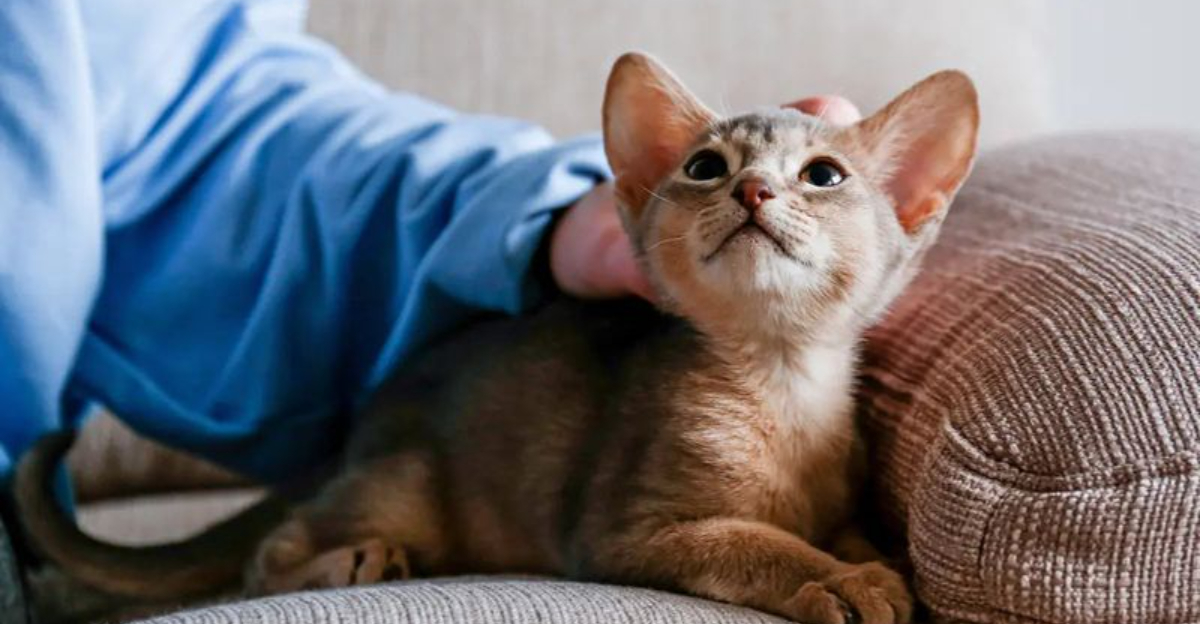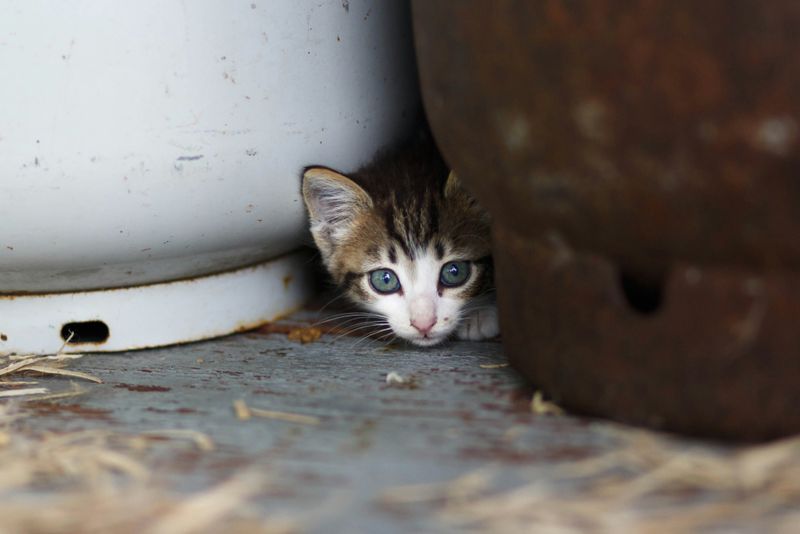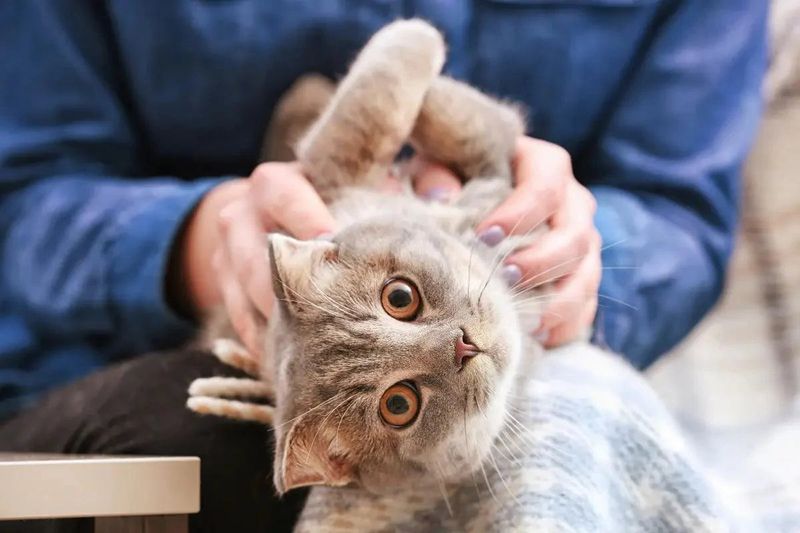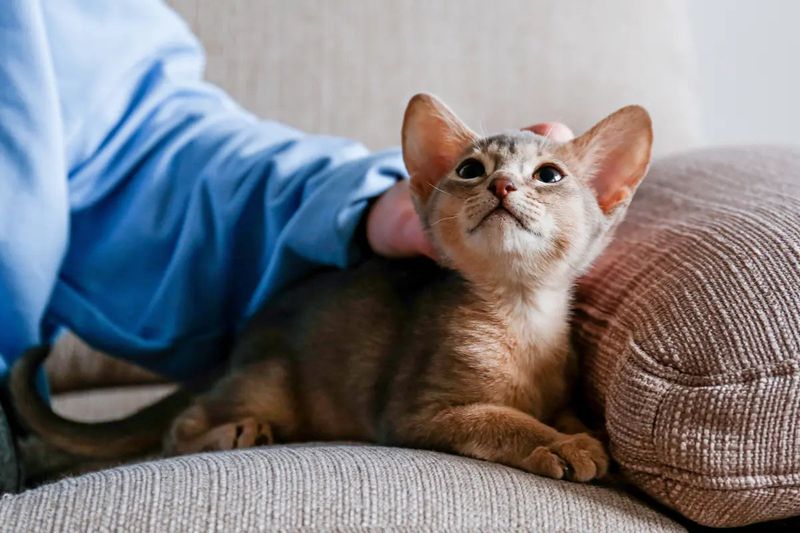📖 Table of Content:
In the animal kingdom, the feline sense of smell stands among the most astonishing and underappreciated. While dogs often get the spotlight for their olfactory talents, cats possess scent receptors that far outnumber those in humans—roughly 200 million to our mere 5 million. This powerful sniffing ability gives them a hidden superpower: the capacity to detect things that escape human awareness entirely.
Many cat owners are familiar with the quirky behavior of their pets—sniffing shoes, suddenly bolting from the room, or staring intently at something unseen. These actions, while often amusing, hint at a deeper world cats interact with every day—a world defined by invisible chemical cues. What seems mundane to us is a rich and complex tapestry of scents for our feline companions.
From detecting illness in humans to predicting natural disasters, cats use their noses in ways science is only beginning to understand. Their mysterious reactions often have real explanations rooted in biology and instinct. This article explores nine remarkable things cats can smell—things we humans are entirely blind to—offering a new perspective on how in tune they are with their environment and the creatures in it.
1. Illness in Humans
Unseen shifts in the human body during illness often go completely unnoticed by us—but not by cats. Their extraordinary noses can detect changes in body chemistry that occur with diseases like cancer, diabetes, or even infections. A cat might begin sniffing an unusual spot on your body, behaving differently around you, or even avoiding you altogether. Such behavior has been documented in anecdotal reports and studies, with some cats becoming more affectionate toward sick owners. Scientists believe these reactions are linked to volatile organic compounds (VOCs) that sick bodies emit. These compounds may be present in our breath, sweat, or skin oils, creating a scent fingerprint unique to illness. While not diagnostic tools, cats are surprisingly good at knowing when something’s off—and they often act on it before doctors do.
2. Hormonal Changes
Without warning, a cat may start acting strangely around you—rubbing more, avoiding you, or meowing incessantly. This often coincides with hormonal changes like pregnancy, menstruation, or ovulation, which subtly alter the way we smell. Unlike humans, cats detect these variations immediately and respond based on instinct. For example, pregnant individuals have reported their cats becoming unusually clingy or even territorial. Such responses are likely due to the body producing different levels of estrogen, progesterone, or other chemicals that change our scent profile. These chemical changes register to cats almost like a switch flipping in their environment. Their behavior, however odd it may seem, is often a reaction to what they’re detecting beneath the surface.
3. Fear and Stress
Emanating from our bodies in times of distress, hormones like cortisol and adrenaline create invisible cues that cats can pick up with precision. These stress-related hormones subtly change our natural scent, alerting cats that something is wrong. It’s why a cat might act nervously or even approach you with concern when you’re anxious or upset. Their ability to sense emotional shifts adds to their reputation for uncanny intuition. Rather than responding to tone or facial expression alone, cats are reacting to the chemical aura of emotion. In some cases, they may avoid you if your stress level is overwhelming, sensing danger or unpredictability. This silent empathy makes cats remarkably attuned companions—even if their care is offered in cryptic ways.
4. Another Cat’s Mood or Health
Approaching another cat, your feline doesn’t just see and hear—it sniffs to read a detailed emotional and physical report. Cats use pheromones and scent glands located around their bodies to broadcast mood, status, and health. A single sniff can inform a cat whether another feline is sick, scared, or in heat. This sophisticated communication system relies almost entirely on scent, allowing cats to avoid fights, attract mates, or care for vulnerable companions. Through mutual grooming or sniffing each other’s faces and rears, they gather essential data. Each smell tells a story, one that shapes how cats interact with each other socially. We humans miss this invisible language entirely, but to cats, it’s as loud and clear as speech.
5. Earthquakes or Natural Disasters
Odd behavior in cats—restlessness, hiding, or vocalizing—is often reported just before natural disasters strike. While much of this is attributed to their acute hearing or sensitivity to vibrations, researchers believe scent also plays a role. Changes in the Earth’s crust or atmosphere may release gases or shift the ion content of the air—things cats can smell. Long before a tremor is felt or a storm is seen, a cat might detect these invisible warning signs. This theory aligns with centuries of anecdotal reports from around the world describing animals fleeing or acting panicked before earthquakes. Cats may perceive these chemical changes as a threat, prompting them to alert their humans or flee. It’s a powerful reminder of their primal instincts and how they’re still connected to the rhythms of nature.
6. Rotting or Spoiled Food (Even When We Can’t)
Morsels that seem perfectly edible to humans may set off alarm bells in a cat’s sensitive nose. Even slightly spoiled food emits chemical markers that cats are trained by evolution to avoid. This skill was essential to their survival as hunters and scavengers. A cat might turn up its nose at meat that smells just fine to us but contains unseen bacteria or decay. Unlike humans, they won’t risk it—preferring to stay hungry than gamble on questionable food. This trait makes them discerning eaters but also reliable judges of what’s safe. Trust their judgment; if they won’t touch it, you probably shouldn’t either.
7. Owner’s Unique Scent
Every human has a personalized scent signature—a blend of pheromones, skin oils, and external smells—that cats can recognize instantly. From across a room or even through closed doors, they can identify their person just by smell. Cats not only distinguish between individuals, but they can also tell where you’ve been. If you’ve interacted with another pet, visited a vet, or walked through unfamiliar territory, they’ll know. This ability explains why some cats act suspicious after you return from elsewhere—they’re decoding the foreign scents on you. Their trust and recognition are deeply tied to this invisible connection. More than sight or voice, it’s your scent that makes you “you” to your cat.
8. Changes in Territory
Subtle shifts in their surroundings don’t go unnoticed by cats—they smell the change before they see it. Whether you’ve moved a chair, added a new rug, or brought home a bag of groceries, they’ll investigate it like a detective. Cats rely on scent to maintain a sense of order in their territory, marking objects with facial pheromones to claim them. New or altered scents disrupt their perceived balance and may trigger territorial behavior. It’s why they rub their faces on furniture or knead new blankets—they’re restoring their scent map. What seems minor to you is a major environmental event for them. Their world is built on olfactory familiarity, and anything new requires re-scenting and approval.
9. Pheromones from Far Away
Drifting invisibly through the air, pheromones can travel vast distances—and cats are finely tuned to detect them. Male cats in particular can sense a female in heat from over a mile away using their vomeronasal organ. This organ, located above the roof of the mouth, allows them to “taste” the air and analyze complex chemical signals. A simple sniff becomes a full-body decoding experience that can trigger mating behavior or territorial instincts. Even spayed or neutered cats may respond to these long-range messages with agitation or vocalization. Their natural drive to track pheromones reveals just how scent-focused their biology is. These airborne cues serve as nature’s social network—completely invisible to us, but endlessly informative to them.









